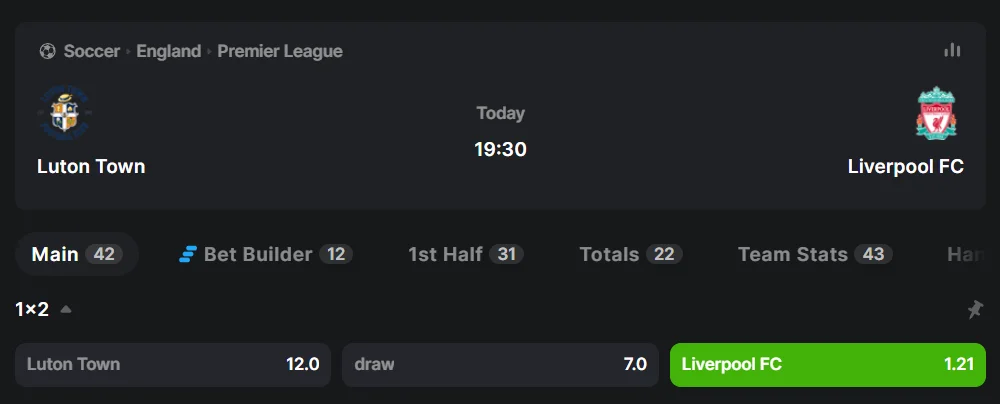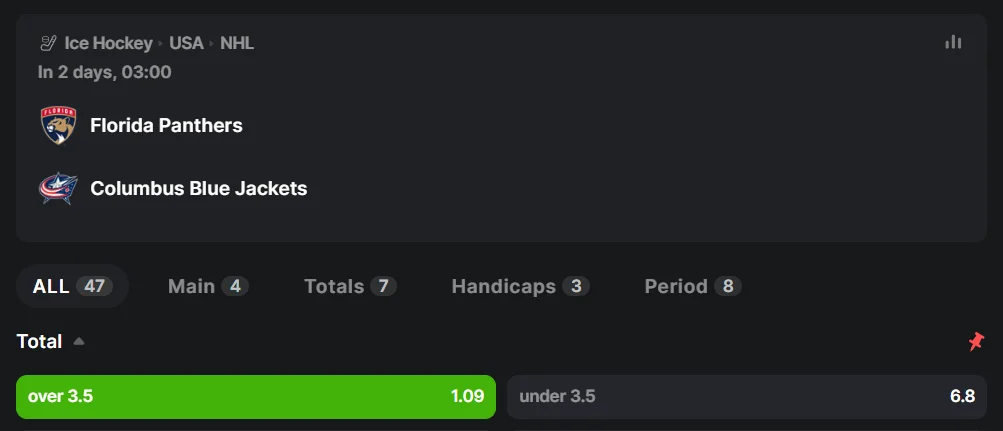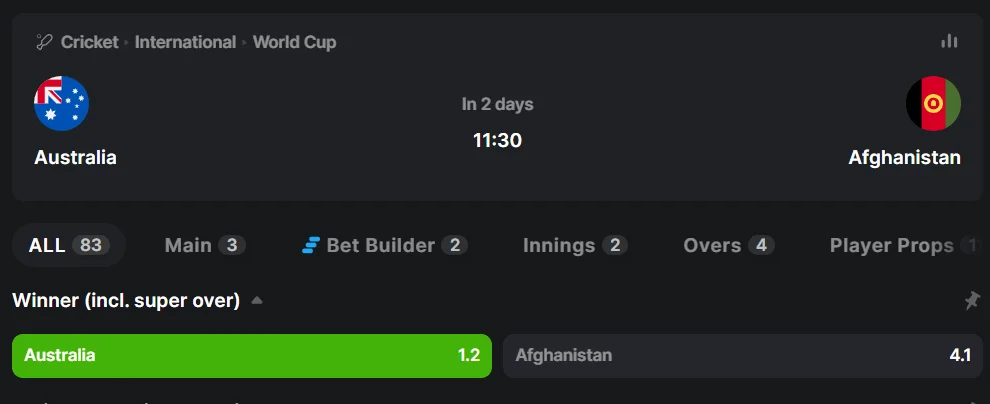
Low odds meaning sports betting strategies aim to generate consistent profits with lower risk. One approach is flat betting, in which the same amount is bet on each event, providing a steady pot. Multipliers, or accumulators, allow multiple events to be combined to increase the odds and potential profit, but require more precise analysis. Betting on clear favorites (bankers) provides lower odds but a more likely win. Analyzing statistics, team and player form can also help you make informed bets. Bankroll management and a variety of strategies play a key role in achieving success with small odds betting.
What are Low Odds in Betting
In the betting arena, low odds often indicate a high probability of an event occurring, leading many to see them as safe bets. These odds reflect the consensus that the outcome is more likely than not to happen. For instance, a heavy favorite in a sporting event will typically be associated with low odds. The meaning of low odds, therefore, is intertwined with the expected success rate of the bet; the lower the odds, the higher the expectation of a win.
For a practical illustration, take the scenario where Manchester City is set to host Norwich City in a Premier League match. Given Manchester City’s strong track record and home advantage, bookmakers may list them with winning odds of 1.25. Such odds are classified as low, reflecting the general anticipation of a Manchester City victory as they are the favored side against a team with a less impressive performance history.
However, it’s crucial for bettors to understand that low odds don’t guarantee a win; they simply reflect the perceived likelihood of an event. While the potential return on low odds might not be substantial, they are a cornerstone in the strategies of many bettors who prefer accumulators or systematic betting, where they combine several low-odds bets to boost potential returns.
low odds betting strategy
Betting when odds are low seems straightforward, but it requires a keen strategy to turn it into a successful betting practice. Low odds typically indicate a high probability of an event occurring, making them a popular choice for bettors seeking to maintain a steady win rate. However, the returns on such bets are usually modest, demanding a disciplined approach to ensure profitability over time.
The first pillar of a solid low odds betting strategy is bankroll management. Bettors must decide the percentage of their bankroll to wager on low odds bets, keeping in mind that even ‘safe bets’ can lose. It’s essential to resist the temptation to stake large amounts just because the outcome seems likely.
Another critical aspect is the selection process. Not all low odds are good odds. Sharp bettors scrutinize the games and the odds, looking for situations where the odds might not fully reflect the actual chance of the event. This might involve betting on a team with consistent performance rather than a fluctuating one, even if the odds are slightly higher.
The accumulator approach is a popular strategy in low odds vs high odds betting. It involves combining multiple low-odds bets to increase the overall potential return. This strategy can be effective, but it requires careful selection and analysis of each bet.
Lastly, continuous research and staying informed is indispensable. Understanding the dynamics of the teams, player conditions, historical performance against opponents, and other situational factors can provide the edge needed to make the most of low odds betting.
By adopting a methodical approach, bettors can strategically leverage low odds to their advantage, ensuring a sustainable and disciplined betting practice.
What to bet on
The choice of what to bet on in a small odds betting strategy depends on your objective and risk level. The following options can be considered in this strategy:
- Favorites: Events where one side is considered the absolute favorite. These can be teams with high rankings, strong players or known results in past matches.
- Totals: Betting options on the total number of points scored, goals, or other indicators in an event. Choosing “more” or “less” of a certain value can be interesting if there is a correct idea of how the event will unfold.
- Fora: Betting taking into account the virtual advantage or disadvantage of one of the sides. In this case, you bet not only on the victory, but also on the size of the score difference.
- Draws: Events where a draw is possible. Such bets can be stable, but bring small winnings.
- Live: Moments with small odds during an event can be used for quick live betting.
Examples of low odds betting
When examining low odds betting across various sports, it’s crucial to recognize how such odds reflect the expected outcomes and potential value in a wager.
low odds betting in Football
Let’s scrutinize a football match featuring Luton Town versus Liverpool FC. With Liverpool’s robust performance history and standing, bookmakers may offer odds of 1.21 for a Liverpool victory. These odds suggest a high likelihood of Liverpool coming out on top, aligning with the team’s status as a strong contender. However, bettors should be mindful that while such low odds indicate a probable win for Liverpool, the return on investment would be modest. This scenario exemplifies the concept of low odds betting in football, where the anticipated result is a win for the favored team, but the financial gain remains relatively small.

Hockey: Betting with Low Odds
In a face-off between the Florida Panthers and the Columbus Blue Jackets, a bet on the total score being over 3.5 carries odds of 1.09. This low odds bet implies a strong expectation of at least four goals during the game, a common occurrence in hockey matches involving teams with potent offenses.

Tennis: Low Odds
Considering a tennis match where Novak Djokovic competes against Grigor Dimitrov, placing a bet on Djokovic to win with odds of 1.33 is a classic example of low odds betting in tennis. These odds reflect Djokovic’s higher ranking and consistent performance, signaling a high probability of his victory.

Basketball: Low Odds Betting Example
Low odds example in basketball, a game featuring the Dallas Mavericks versus the Charlotte Hornets might present odds of 1.16 for a Mavericks win. This bet suggests that the Mavericks are heavily favored to triumph, indicative of their strong record or home-court advantage against an underdog like the Hornets.

Cricket
For a cricket match with Australia versus Afghanistan, a wager on Australia to win with odds of 1.2 represents the expected dominance of the Australian team over their less-experienced opponent. Such low odds in cricket highlight the disparity in team strengths and the anticipated ease of victory for the favored side.

Each of these examples demonstrates low odds betting in different sports, where the odds offered are low due to the high likelihood of the outcome. Bettors gravitate towards these bets for their perceived lower risk, but they must also consider the smaller returns on such wagers.
Common mistakes of low odds betting
When betting on sports, beginners can make some common mistakes:
- Lack of analysis: Insufficient analysis of an event and over-reliance on intuition can lead to bad bets.
- Overestimating favorites: Betting only on favorites without analysis can lead to losses as even they can lose.
- Betting too much: Overinsurance and betting too much can lead to significant losses.
- Panic reactions: Reacting to changes in the event with panic and betting too often can make the situation worse.
- Ignoring the bankroll: Failing to account for bankroll management and betting beyond your means can quickly drain your budget.
- Blind faith in strategies: However good a strategy might be, you should not rely on it completely. Sports are unpredictable and adapting to new circumstances is important.
- Choosing unreliable BCs: Failure to check a bookmaker’s reputation and license can lead to problems with winnings payouts.
- Blind imitation: Following the advice of others without analyzing it yourself can be risky.
To minimize mistakes, beginners should start with small bets, delve into analysis and gradually master the principles of successful sports betting.
Pros and cons of deals with low odds
Low odds deals have both pros and cons, and it’s important to consider them carefully before making a decision:
| ✅ Pros | ❌ Cons |
| Stability: Events with low odds are generally considered more likely to occur, increasing the chances of success. This can provide a steady stream of small winnings. | Small profits: The main disadvantage of low odds deals is that even successful bets make small profits. Many bets need to be placed in order to make a significant amount. |
| Risk Management: Low odds trades generally have a lower risk of losing money than betting on high odds events. | Limited Potential: Deals with low odds can limit your potential to significantly increase your bankroll. |
| Initial Training: This is a good way to begin to venture into the world of sports betting. Deals with low odds can be less difficult to analyze and understand. | Uncertainty: Even with low odds, sporting events can have unexpected outcomes, which can cause you to lose your bet. |
| Compounding Strategies: Events with low odds can be incorporated into various strategies, such as multipliers, to increase the overall odds. | Less interest: Since small profits don’t incentivize as much as big wins, low odds trades may generate less interest among some players. |
So, low odds trades have their advantages and limitations. They can be useful as part of an extensive betting strategy, but it is important to realize that the profits from them will be small.

Frequently Asked Questions
Yes, you can, but profits are usually small due to low odds, so careful analysis and bankroll management is required.
It is important to realize that the profit will be small but stable, it is necessary to analyze events, effectively manage the bankroll and understand the risks.
When betting on low odds, you select an event, specify the bet amount and the odds, which determines the potential profit in case of success – winnings = bet amount * odds.













